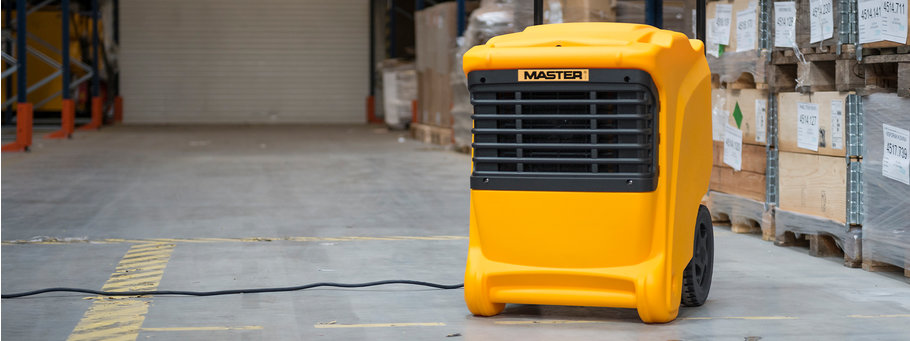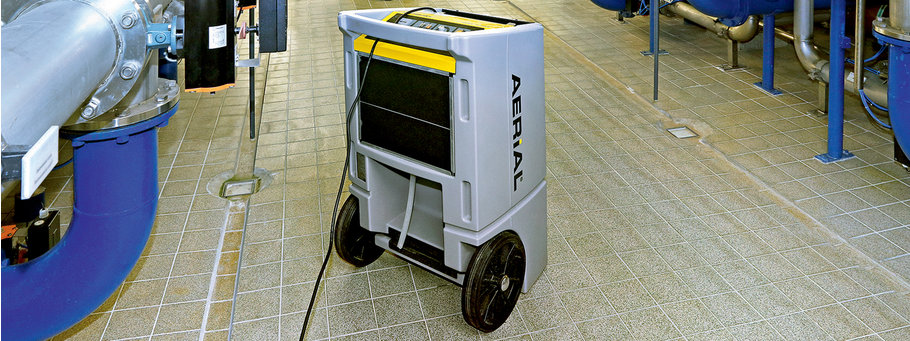If you’ve got condensation in your home, then it's likely your relative humidity levels are too high. This is a common problem in the UK, which has a fairly humid, maritime climate.
Why is Condensation a Problem in Homes?
One major reason is that condensation can attract mould. Mould usually starts as a cloud of tiny black dots and can be found on surfaces such as the inside of external walls and in poorly ventilated spaces such as crawl spaces and basements. In fact, anything above 80% relative humidity – and mould will usually start to appear (an Ideal comfort level in the home is between 40% and 60% relative humidity). Mould is a trigger for many health isues and can even cause asthma in children. Dust mites also thrive in high humidity and this can trigger unpleasant allergies.
What Causes Condensation?
Condensation in the home happens when moisture in the air comes into contact with a colder surface like a window or wall. Because the air is now cool, it can't hold the moisture and tiny drops of water are created.
The way we live within our homes can have an effect on how much condensation is produced. And typical daily activities all increase the level of moisture within the air. Some of these activities include:
• Cooking
• Boiling a kettle
• Bathing
• Washing clothes
• Breathing
The problem can really increase in the winter as we tend to keep the windows closed and have our heating on. The reduced ventilation and air circulation can mean moisture is trapped within the home. Plus, rain and melting snow can mean moisture is more likely to enter the home.
Because less moisture leaves the house, humidity levels rise. Condensation then increases on the parts of the house in direct contact with the outside such as single glazed windows and uninsulated walls. Plus, most people have their central heating on at this time of year, and the warmer the air, the higher its capacity to hold moisture.
1. Make Changes at Home
Use your Extractor Fan
When cooking, always use an extractor fan. This will help get rid of the excess moisture.
Install a Bathroom Fan
If you can, install an extractor fan in the bathroom, ideally one with an inbuilt humidistat.
Open the Window
When possible open your windows to get more ventilation into your home, leave them open if you can and it is safe to do so. Be sure to open the window in the bathroom when you have a shower, or immediately after.
Use a Squeegee
Squeegee down the walls and shower screen after showers to remove excess moisture.
Washing Clothes
Dry your washing with a tumble dryer if you can.
2. Buy a Dehumidifier
Dehumidifiers are a fantastic way of fighting condensation and dampness. Whether you need a desiccant or compressor dehumidifier depends on your situation and both types have their benefits.
Desiccant Dehumidifiers
Desiccant Dehumidifiers work by using a desiccant material which absorbs moisture from the air. The dehumidifier's fan draws air in, where it passes over a slowly rotating wheel that contains a desiccant which then dries the air.
Desiccant dehumidifiers are not temperature dependant so work in both warm and cooler temperatures. They work better in cooler conditions, making them a much better solution for unheated buildings such as garages. They are also typically quieter than refrigerant styles.
Refrigerant Dehumidifiers
Refrigerant or condenser dehumidifiers draw in warm damp air and pass it over a refrigerated coil where the warm humid air comes into contact with the cold surface, turning it into water droplets which are captured in a tray. The dry air is then reheated to room temperature using a warm coil and released back out. The refrigerant dehumidifiers need to operate in warmer temperatures in order to function properly, so are not suited to cold spaces. They are typically lower in energy consumption and often have more intelligent, sophisticated control systems.
There are many ways that condensation in the home can be tackled, however, sometimes some simple tweaks and an effective dehumidifier are all that is needed. Our team can help you decide which dehumidifier is best for your needs. Contact us today to find out how we can help you get rid of your condensation for good.





